
The Pearce Museum is a museum in Corsicana, Texas, containing two galleries, Western art and American Civil War sections. It is located in the Cook Center at Navarro College.

The Pearce Museum is a museum in Corsicana, Texas, containing two galleries, Western art and American Civil War sections. It is located in the Cook Center at Navarro College.
The Pearce Museum is located in the Cook Center at Navarro College. The museum shares a building with a planetarium, and tickets can be purchased to visit both sections of the Cook Center.
Charles and Peggy Pearce originally started collecting art when they had a home in Santa Fe, New Mexico where many contemporary Western artists lived. Their philosophy for the collection is based upon gathering a representative collection from recognized artists while identifying up and coming artists. The Pearce Western Art Collection began when Charles and Peggy Pearce decided to find a permanent home for their growing collection of Western Art. In 1998, they placed about 30 paintings and bronzes in the care of Navarro College in Corsicana, Texas. The benefactors continue to donate new works to the collection.
The Pearce Civil War Collection began in 1991 when Charles S. Pearce Jr. purchased the first document as a gift for his wife, Peggy. That gift, a letter from the battlefield at Antietam written by Joshua Lawrence Chamberlain to his wife Fanny, sparked an ongoing interest that led to the collection of these historically significant documents. In 1996, when the Pearces decided that their collection needed a home where it could be viewed and researched, they placed it in the care of Navarro College. Through the generosity of the Pearces, the collection continues to grow.
The Pearce Western Art Gallery is home to original works of art by acknowledged masters of Western Art as well as recent original works by members of the National Academy of Western Art, the Cowboy Artists of America, and the National Sculpture Society, among others.
The Western Art Collection continues to engage viewers because of its narrow focus. Only contemporary artists are represented, and all pieces in the collection must "tell a story." The dramatic impact of that tale-telling is amplified by the museum's spacious galleries, where 12-foot ceilings have been painted midnight blue to evoke western skies at night.
The Pearce Civil War Gallery is an interactive collection featuring firsthand accounts of the American Civil War. Organized around a time-line of the Civil War, the Pearce Civil War Gallery exhibits and interprets letters, diaries, journals, photographs, and artifacts from the civilians, soldiers, military, political, and civic leaders of the era.
The Pearce Civil War Collection is a collection documenting the Northern and Southern experiences of the Civil War as well as its leaders, common soldiers, and residents. Letters from major military, political, and civic leaders as well as diaries and letters of the common soldier describe the gruesome realities of combat and the desperate loneliness of soldiers in letters to beloved parents, siblings, and friends.
The collection offers online educational materials that reflect a distinct "Lost cause" editorial position. [1]
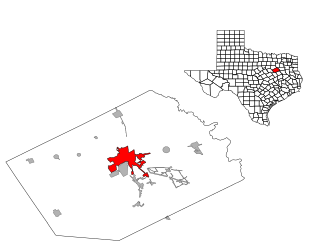
Corsicana is a city and the county seat of Navarro County, Texas, United States. It is located on Interstate 45, 56 miles northeast of Waco. Its population was 25,109 at the 2020 census. Corsicana is considered an important agribusiness center.
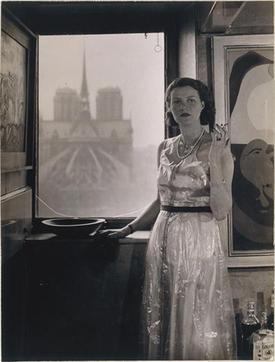
Marguerite "Peggy" Guggenheim was an American art collector, bohemian, and socialite. Born to the wealthy New York City Guggenheim family, she was the daughter of Benjamin Guggenheim, who went down with the Titanic in 1912, and the niece of Solomon R. Guggenheim, who established the Solomon R. Guggenheim Foundation. Guggenheim collected art in Europe and America between 1938 and 1946. She exhibited this collection as she built it. In 1949, she settled in Venice, where she lived and exhibited her collection for the rest of her life. The Peggy Guggenheim Collection is a modern art museum on the Grand Canal in Venice, Italy, and is one of the most visited attractions in Venice.

Frederic Sackrider Remington was an American painter, illustrator, sculptor, and writer who specialized in the genre of Western American Art. His works are known for depicting the Western United States in the last quarter of the 19th century and featuring such images as cowboys, American Indians, and the US Cavalry.

The American Civil War was the most widely covered conflict of the 19th century. The images would provide posterity with a comprehensive visual record of the war and its leading figures, and make a powerful impression on the populace. Something not generally known by the public is the fact that roughly 70% of the war's documentary photography was captured by the twin lenses of a stereo camera. The American Civil War was the first war in history whose intimate reality would be brought home to the public, not only in newspaper depictions, album cards and cartes-de-visite, but in a popular new 3D format called a "stereograph," "stereocard" or "stereoview." Millions of these cards were produced and purchased by a public eager to experience the nature of warfare in a whole new way.
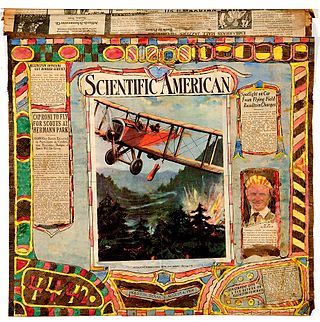
Charles August Albert Dellschau was a Prussian-American who gained posthumous fame after the discovery of his large scrapbooks that contained drawings, collages and watercolors of airplanes and airships. He has been classified as one of the first visionary artists.

The Smithsonian American Art Museum is a museum in Washington, D.C., part of the Smithsonian Institution. Together with its branch museum, the Renwick Gallery, SAAM holds one of the world's largest and most inclusive collections of art, from the colonial period to the present, made in the United States. More than 7,000 artists are represented in the museum's collection. Most exhibitions are held in the museum's main building, the Old Patent Office Building, while craft-focused exhibitions are shown in the Renwick Gallery.

The Honolulu Museum of Art is an art museum in Honolulu, Hawaiʻi. The museum is the largest of its kind in the state, and was founded in 1922 by Anna Rice Cooke. The museum has one of the largest single collections of Asian and Pan-Pacific art in the United States, and since its official opening on April 8, 1927, its collections have grown to more than 55,000 works of art.

Navarro College is a public community college in Texas with its main campus in Corsicana and branches in Mexia, Midlothian, and Waxahachie. The college has an annual student enrollment of more than 9,000 students.
The bibliography of the American Civil War comprises books that deal in large part with the American Civil War. There are over 60,000 books on the war, with more appearing each month. Authors James Lincoln Collier and Christopher Collier stated in 2012, "No event in American history has been so thoroughly studied, not merely by historians, but by tens of thousands of other Americans who have made the war their hobby. Perhaps a hundred thousand books have been published about the Civil War."
C. M. Russell Museum Complex is an art museum located in the city of Great Falls, Montana, in the United States. The museum's primary function is to display the artwork of Great Falls "cowboy artist" Charles Marion Russell, for whom the museum is named. The museum also displays illustrated letters by Russell, work materials used by him, and other items which help visitors understand the life and working habits of Russell. In addition, the museum displays original 19th, 20th, and 21st century art depicting the American Old West and the flora, fauna, and landscapes of the American West. In 2009, the Wall Street Journal called the institution "one of America's premier Western art museums." Located on the museum property is Russell's log cabin studio, as well as his two-story wood-frame home. The house and log cabin studio were designated a National Historic Landmark in 1965, and added to the National Register of Historic Places in 1966. In 1976, the listing boundaries were amended to account for moving the house.
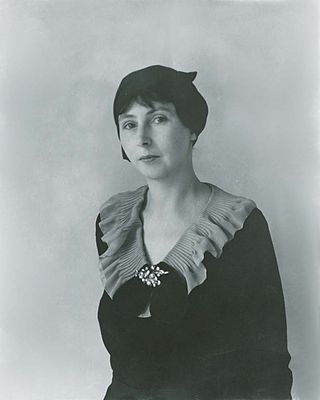
Margaret Frances Bacon was an American artist, best known for her satirical caricatures.
Kenneth William Rendell is the founder of The International Museum of World War II in Boston, and an American dealer and expert in historical documents.

Hill College is a public community college in Hillsboro, Texas. It opened its doors in 1923, one year before North Central Texas College, which is the oldest continuously-operating community college in Texas because Hill College was closed during the 1950s.
The United States Army Art Program or U.S. Army Combat Art Program is a U.S. Army program to create artwork documenting its involvements in war and peacetime engagements. The art collection associated with the program is held by the U.S. Army Center of Military History. The United States Army Centre of Military History built the National Museum of the United States Army at Fort Belvoir that is now completed and will open when conditions allow.

Joseph Hirsch (1910–1981) was an American painter, illustrator, muralist and teacher. Social commentary was the backbone of Hirsch's art, especially works depicting civic corruption and racial injustice.

Joyce Kozloff is an American artist known for her paintings, murals, and public art installations. She was one of the original members of the Pattern and Decoration movement and an early artist in the 1970s feminist art movement, including as a founding member of the Heresies collective.
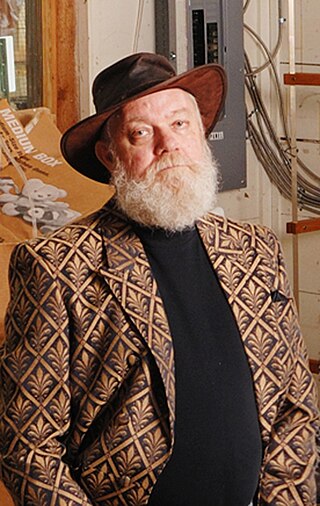
Charles Pearce is a British calligrapher and painter. His work may be found in collections around the globe, including those of members of the British Royal Family. He is recognized for the strength and beauty of his letterforms and his calligraphy manuals are recommended to their students by calligraphy teachers around the world.

Howard Edwin Hack was an American representational painter and graphic artist, with works in numerous museum collections. Known for an innovative approach to a variety of media, as well as use of traditional oil paints, Hack began working in the late 1940s. He was active in the San Francisco Bay Area.

Howard Hinton was an Australian art patron and benefactor. A thwarted artist due to shortsightedness, he visited many of the great galleries of Europe in his youth. At age 24 he migrated to Australia and quickly associated with leading artists of the Heidelberg School and the bohemian artists' camps around Sydney Harbour in the 1890s. He built a successful career in shipping and, along with a family inheritance, used his moderate wealth to support waves of Australian artists in the first half of the twentieth century. Through extensive donations to the Art Gallery of New South Wales and particularly the Armidale Teachers' College he became one of the greatest benefactors in Australian art history.
Lila Oliver Asher was an American artist and printmaker. She is best known for her printmaking, primarily with linocut and woodcut, and her subjects spanned from religious themes, myths, musicians, and mothers. Asher also explored a variety of mediums including watercolor, sculpture, drawing, portraiture, wrought iron, murals, stained glass windows, and published book about her experiences as an artist in World War II. She explored these themes and mediums over the expanse of her long career as they connected with her experiences in life.